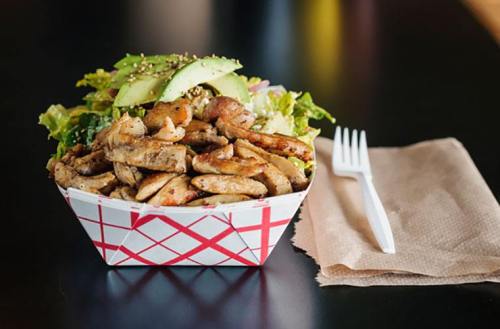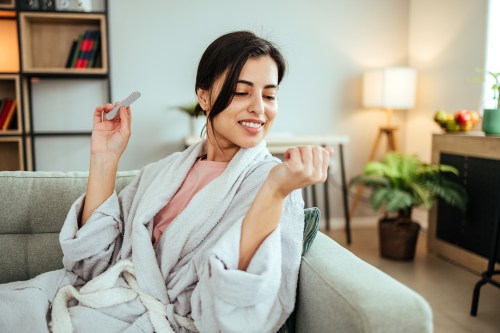From Weight Watchers to WW: How the global weight-loss company is evolving into a full wellness brand
Important Weight Watchers news: Find out how the company morphed from being known for a diet plan to becoming a holistic wellness movement with its new name, WW.

Three years ago, Weight Watchers was in trouble: The number of sign-ups was down 20 percent, from 3.6 million in 2014 to 2.9 million. Debra Benovitz, the brand’s SVP of consumer insights, conducted a study to glean more information on the company’s perception. And to do that, she asked a thought-probing visual question: “I asked people, if Weight Watchers was a house, what they thought it looked like,” she says.
Benovitz put 300 photos on the wall, all related to home decor and architecture, expecting to glean a portrait of whom and what the brand represented in this modern moment of green juices and boutique fitness. Here’s how people described the “house of Weight Watchers” in 2015: “Warm traditional Tudor in family-friendly suburb. Outdated decor and overly cluttered florals. The owner is a pleasantly plump empty-nester who loves chit-chatting. She hosts book clubs and shares simple snacks from a box.” The takeaway: Clearly, the brand needed a makeover. How could the company get people to see that Weight Watchers was for Lululemon-loving, matcha-sipping women, too?
The problem wasn’t that Weight Watchers didn’t work.
The problem wasn’t that Weight Watchers didn’t work. The brand was founded on the intersection of science-backed ways to lose weight and consumer insights (AKA how to make it actually part of people’s lives). In fact, people following the program were eight times more likely to lose weight than those who tried to do it by themselves (according to a 2013 study), and after six months, the average weight loss was 7.9 percent (according to a recent clinical trial). The problem was that people were sick of dieting. “Everyone from Wisconsin to Los Angeles told me that they didn’t want a diet—they wanted a plan to eat better,” Benovitz says, which is a different mindset altogether.
In the years since Benovitz created her consumer insights vision board, the brand has worked to give the customers what they want—revamping the program three times, once later that year, and again in 2017 by reworking their signature points system and bringing in Mindy Grossman to take over as CEO (a leader who has been credited with transforming brands such as Nike, Ralph Lauren, and others). And yesterday, Weight Watchers made what might well be considered its biggest change to date by rebranding its name and tagline: WW, “Wellness that Works.”
How exactly does a program based entirely on racking up points—AKA values assigned to foods based on calorie and nutritional content—with every meal transition to one that embraces a holistically healthy lifestyle?
Scroll down to find out how Weight Watchers became a buzzy wellness brand.

From Beyond The Scale to all the chicken and fish you want
The shift started in 2015 when Weight Watchers unveiled its Beyond The Scale initiative, which encouraged healthy habits beyond strategic eating. Before, physical activity seemed like a bonus—not a necessary part of the system—but now, for the first time, members had set goals for “activity,” a more all-encompassing word for “fitness.” Weight loss was still the goal, but it wasn’t the be-all, end-all, explains Benovitz.
The brand also started to fine-tune its app, launching a new tab within it called Connect, which is basically Instagram-meets-#fitspo. A way to expand the Weight Watchers community beyond the 15,000 in-person meetings held each week, on it, users share their before-and-after photos, fave healthy meals, and feelings of discouragement. But they also celebrate moments that have nothing to do with weight loss, such as engagement parties or decorating the family Christmas tree.
This month, the brand announced its biggest change yet. With WW Freestyle, the company expanded its list of Zero Points foods from just fruits and veggies to include skinless chicken or turkey breast, fish, eggs, beans, tofu, lentils, nonfat plain yogurt, and fish. Hypothetically, it might not sound like a great idea to give people with a weight loss goal a way to pile their plates high with chicken and beans. But Gary Foster, Weight Watchers’ chief scientific officer, says the science supports the switch. “We picked foods that are at low risk for being overeaten and are also recommended by the dietary guidelines set by the USDA,” he says.
“It’s never been just calories in, calories out for us. It’s about what the food as a whole is doing for your body.” —CEO Mindy Grossman
There was another reason for making more ingredients Points-free: It gave people less food to log. “The app makes tracking food relatively easy, but it’s still work, and we know that the longer members stick with the program, the more weight they lose,” Foster says. “We wanted to make [sticking with it] easier for them.”
But Benovitz, whose job is studying consumers’ habits, noticed a funny thing happening: People liked logging the Zero Points foods. “They like seeing all the zeros,” she says. Foster adds that coffee (zero Points) is the most logged beverage and bananas (also zero Points) are the most logged food overall.
According to Grossman, the new Points system goes beyond weight loss and is something anyone can use as a tool to learn more about the health benefits of the foods they eat. “It’s never been just calories in, calories out for us,” she says. “It’s about what the food as a whole is doing for your body. What nutrients it has. What’s going to be satiating. It helps people make easier food choices.” Does she see Weight Watchers evolving further to become an app everyone with healthy goals can use, not just those with weight loss in mind? Absolutely.

Where movement and meditation fit in
While the new food point system is the main pillar of Weight Watchers’ latest evolution—hey, everybody’s gotta eat—Grossman says movement and meditation will continue to play even more integral roles. “You’re going to see further integration of mindfulness,” she says. The company has even partnered up with guided meditation app Headspace to “help develop customized content for WW members,” according to the press release.
“What our team is working on next is, ‘How do we talk about physical activity that’s beyond just calories burned?'” —Gary Foster, chief scientific officer
Foster stresses that the reasoning behind incorporating mindfulness isn’t a gimmick—it’s backed by research. “Physical activity increases the quantity and quality of your life in so many ways independent of weight,” he says. “What our team is working on next is, ‘How do we talk about physical activity that’s beyond just calories burned?’ That’s where the future of our innovation is going.”
The Weight Watchers team also recognizes that there are many deep, complicated emotions tied to food. Many people feel shame or are triggered by stress and anxiety to overeat. Figuring out how to manage those emotions has become a central focus for the brand. “Science tells us that a positive self-image and happiness is linked to being more successful with weight loss,” Foster says. It’s a big reason why the brand strives to be positive overall—AKA no body shaming allowed. Not only is it a better way to live, it’s proven to work.
What Weight Watchers has in common with your fave trainer on Insta
Just like Emily Skyes, Kayla Itsines, and the Tone It Up duo, Weight Watchers has its own online community where members share their progress and struggles. “Weight Watchers has been about community from the day it started,” Grossman says. Besides in-person meetings, the brand has active Facebook groups, an Instagram account, and as mentioned before, a photo-feed feature—Connect—in its app.
This year, the brand started hosting the ultimate community event: cruises. Foster emphasizes that these are not weight-loss boot camps. They’re luxe vacations with everything cruisers love: turquoise water, fluffy robes, drinks served in tropical fruit, and, yes, decadent food. “With cruises, there’s this idea that it’s all about the food and you’re going to gain 10 pounds. It still can be all about the food, but it’s debunking that myth,” he says. “One of the many things about dieting that doesn’t work is that you have to leave your life to do it. The cruises show how eating healthy can be integrated into your life.”
Remember when Benovitz asked people to describe Weight Watchers as a house? Not too long ago she re-created the study, posting the same 300 images on the wall. But this time, the description was a little different: “They described it as suburban or beachy, bright, open, airy, modern yet comfortable, and livable,” she says. “The layout invites gathering and lingering, and people are cooking real food in the open kitchen.”
This makeover is perhaps the greatest Weight Watchers before-and-after story of all.
Originally published on December 26, 2017; updated on September 25, 2018 with additional reporting by Kells McPhillips.
For the record, weight loss doesn’t automatically equal confidence. Here’s one sure habit that will help with your self-esteem.
Sign Up for Our Daily Newsletter
Get all the latest in wellness, trends, food, fitness, beauty, and more delivered right to your inbox.
Got it, you've been added to our email list.










